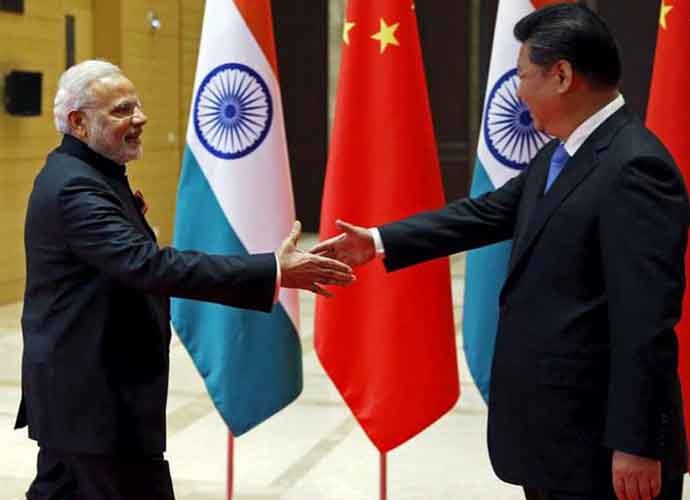What India-Japan signing nuclear agreement means for China

The long-a-coming civil nuclear agreement between India and Japan was the most important outcome of the November 11 Shinzo Abe-Narendra Modi summit.
Even with Abe favouring a nuclear accord with India, building a national consensus within Japan around it has taken time.
The December 2015 India-Japan summit saw progress in reaching understandings on the text of the agreement but signing had to be deferred till after the results of the July 2016 parliamentary elections in Japan.
If despite LDP's (Abe's party) election success, this month's summit too had failed to conclude the agreement, a shadow would have fallen on the India-Japan strategic partnership.
Already China is opposing India's NSG membership, using Delhi's non-NPT status as an excuse.
If Japan too baulked at signing a nuclear accord with India for similar reasons, it would have meant, rather ironically, that both China and Japan were one in maintaining pressure on India on the non-proliferation front.
China has reason to deny India political equality on nuclear issues in order to stall its rise as a power, but not Japan whose interest lies in freeing India from its nuclear chains so that it can counter China's hegemonic ambitions in Asia more effectively.
Agreement
Along with the nuclear agreement, a separate Note on Views and Understandings has been signed by the two sides.
India's position all along has been that it cannot go beyond the template of the nuclear accords it has signed with the US and others, or the statement made by the then external affairs minister (EAM) on the eve of the NSG meeting in September 2008 affirming India's credentials on disarmament and non-proliferation and committing the country to a voluntary moratorium on nuclear testing.
Japan, however, has sought some additional gesture by India, especially on the test ban treaty, to facilitate domestic endorsement for a nuclear deal.
In the separate Note, the Japanese side affirms that EAM's September 5, 2008 statement constitutes for it an essential basis for cooperation and that in case of any departure from it Japan will exercise its rights under the main agreement to seek suspension of reprocessing of nuclear material by India, besides reserving the right to contest any consequent Indian claim for damages.
 |
| PM Modi with Chinese President Xi Jinping. (Photo credit: Reuters) |
The Indian representative has merely reaffirmed the September 5 statement in the Note.
The Japanese side can claim the Note as an additionality, in that the commitment India gave to a group of 48 NSG countries that included Japan, has now been obtained by Japan in its own capacity.
India, however, can legitimately maintain that it has made no additional legal commitment, as the Note merely says that what it records "is an accurate reflection of the views of the two sides".
The controversy whether the Note was legally binding or not, with the Japanese side saying it was and the Indian side stating that while the agreement was binding, the Note was not, was unnecessary.
The agreement has to be ratified by the Japanese parliament and such contention is unhelpful.
Context
In the context of China's imperious rejection of the UNCLOS arbitral award against its conduct and actions in the South China Sea, its open opposition to India's NSG membership and repeated blocking of India's move in the UN Security Council committee to have JeM chief Masood Azhar designated as an international terrorist, there was speculation about what India and Japan would say in their joint statement on the maritime issues in the region involving China.
The joint statement emphasises the importance of UNCLOS by mentioning it four times in the relevant paragraph, including in the context of resolving disputes in the South China Sea.
China's claim of being Asia's leader now for development purposes and its Belt and Road Initiative that seeks to build its hegemony in Asia provide the context for references in the joint statement to the synergy between India's "Act East Policy" and Japan's "Free and Open India-Pacific Strategy" as well its "Expanded Partnership for Quality Infrastructure" for better regional integration and improved connectivity.
The proposed cooperation in Iran and Afghanistan, including in the development of infrastructure and connectivity for Chabahar, can be seen in this context too.
Platforms
The two paragraphs on defence cooperation stress the role of India and Japan for stability and prosperity in the India-Pacific region.
They outline several agreements, dialogue mechanisms and exercises pertaining to defence.
Modi has conveyed his appreciation for Japan's readiness to provide its state-of-the-art defence platforms such as US-2 amphibian aircraft, though no decision on its acquisition was announced.
It was rightly stated that this symbolises the distance that Japan and India have covered in advancing their bilateral defence exchanges.
On terrorism, the other geopolitical issue on which India is facing difficulties, the formulations in the joint statement cover the required ground, including a call for stopping cross-border terrorism.
Omitting to mention LeT and JeM in the statement, and especially the designation of Masood Azhar as a terrorist by the UN Security Council Committee, is surprising. The last should have been done if only to highlight China's obstructive attitude.
For the rest, Donald Trump's election and the uncertainty that this has created about the US pivot towards Asia, policy towards China and US defence commitments in the region, will place a higher burden on India and Japan to together meet the challenges ahead.
(Courtesy of Mail Today.)

